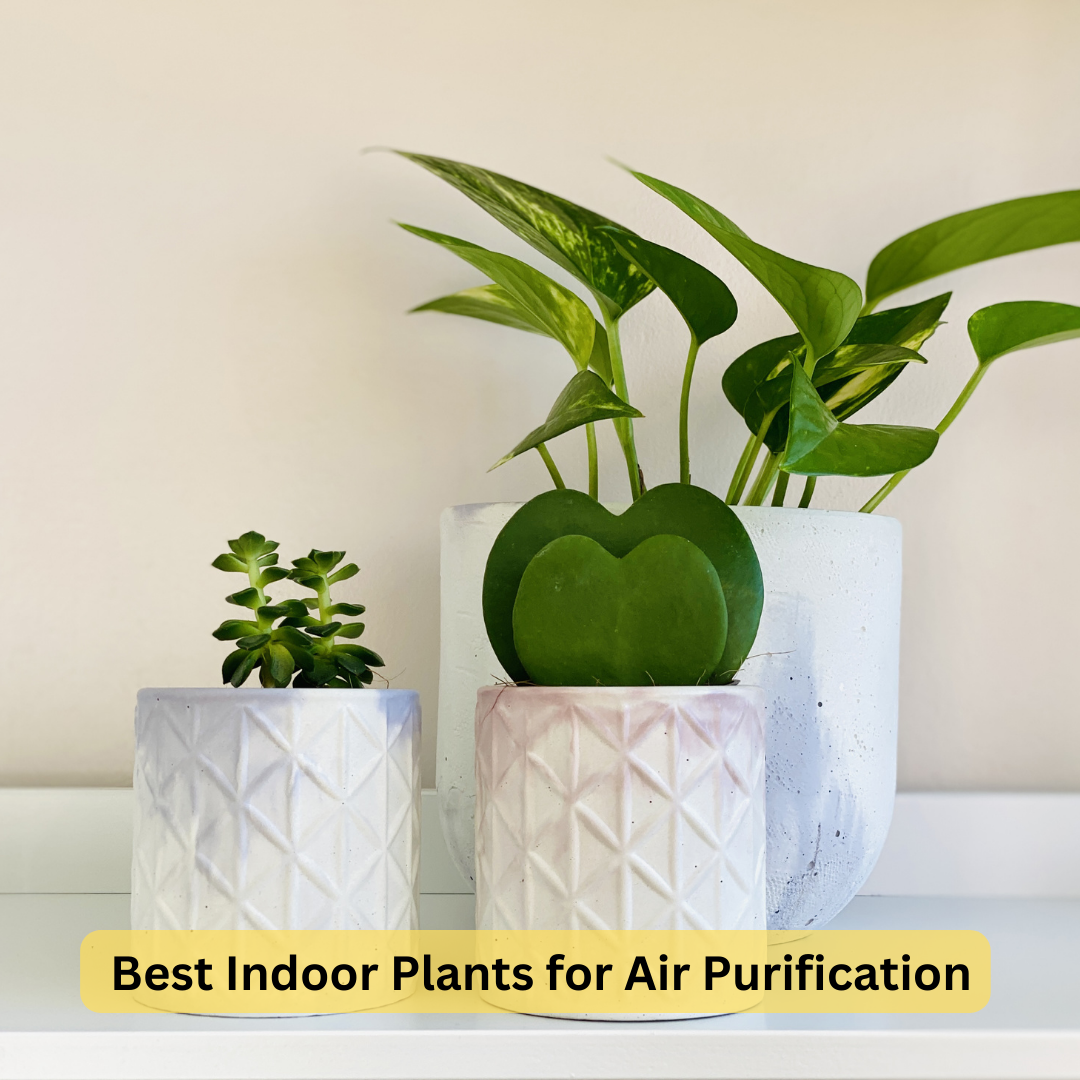In this article, we are going to discuss Best Indoor Plants for Air Purification. In today’s urban lifestyle, air pollution has become a significant concern, not just outdoors but also inside our homes and offices. Indoor air quality can be compromised by various pollutants from furniture, cleaning products, and even our daily activities. One effective and natural way to combat indoor air pollution is by incorporating air-purifying plants. These plants not only enhance the aesthetic appeal of your living spaces but also improve air quality by removing toxins and releasing fresh oxygen.
Best Indoor Plants for Air Purification
Here are ten of the best indoor plants for air purification:
1. Snake Plant (Sansevieriatrifasciata)
The Snake Plant, also known as Mother-in-Law’s Tongue, is a resilient and low-maintenance plant that thrives in various conditions. It is particularly effective in filtering out toxins like formaldehyde, xylene, toluene, and nitrogen oxides. Because it releases oxygen at night, this plant is a great option for bedrooms. Its upright, sword-like leaves add a modern touch to any room. Snake Plants require minimal watering and can survive in low light, making them perfect for busy individuals or those new to gardening.
2. Spider Plant (Chlorophytumcomosum)
Spider Plants are known for their air-purifying abilities and are exceptionally easy to care for. They effectively rid the air of toxins like xylene and formaldehyde. These plants produce ‘pups’ or baby plants that can be easily propagated. Spider Plants thrive in indirect sunlight and need moderate watering. Their long, arching leaves with green and white stripes can brighten up any space, and their air-purifying qualities make them a great addition to kitchens and living rooms.
Also Check: Best Websites to buy Indoor Plants in India
3. Peace Lily (Spathiphyllum)
Not only are peace lilies stunning, but they are also effective air filters. They can remove toxins like ammonia, formaldehyde, benzene, and trichloroethylene from the air. Peace Lilies prefer low to medium light and need to be watered regularly to keep the soil moist. Their dark green leaves and elegant white flowers can enhance the decor of any room while improving air quality. However, it is important to note that Peace Lilies are toxic to pets, so they should be placed out of reach of curious animals.
4. Aloe Vera (Aloe barbadensis miller)
Aloe Vera is well-known for its medicinal properties, but it also acts as an excellent air purifier. It helps in removing formaldehyde and benzene, which are byproducts of chemical-based cleaners and paints. Aloe Vera thrives in bright, indirect sunlight and requires minimal watering, making it a great choice for busy individuals. Additionally, the gel inside its leaves can be used to treat minor cuts, burns, and skin irritations, adding a practical benefit to its air-purifying qualities.
5. Boston Fern (Nephrolepisexaltata)
Boston Ferns are highly effective in removing pollutants like formaldehyde and xylene from the air. They are known for their feathery, arching fronds that add a touch of elegance to any room. Boston Ferns prefer indirect sunlight and need to be kept in a humid environment with consistent moisture. They can be a bit more demanding in terms of care, but their air-purifying benefits and visual appeal make them worth the effort. Placing them in bathrooms or kitchens where humidity levels are higher can help them thrive.
6. Bamboo Palm (Chamaedoreaseifrizii)
The Bamboo Palm is a robust and attractive plant that excels in air purification. It successfully purges the air of formaldehyde, benzene, and trichloroethylene. Bamboo Palms prefer bright, indirect light and need to be watered regularly to keep the soil moist. Their tall, graceful fronds can add a tropical feel to any indoor space. They are also known for their ability to add moisture to the air, making them beneficial in dry environments. With proper care, Bamboo Palms can grow quite large, becoming a striking focal point in your home.
7. Rubber Plant (Ficuselastica)
Rubber plants are very good at eliminating atmospheric pollutants such as formaldehyde. They have large, glossy leaves that can add a touch of greenery to any room. Rubber Plants prefer bright, indirect light and need to be watered when the soil becomes dry to the touch. They are relatively low-maintenance and can grow quite tall, making them ideal for larger spaces. The plant’s ability to improve air quality while enhancing interior decor makes it a popular choice for homes and offices alike.
Checkout: Top Websites in the World
8. Areca Palm (Dypsislutescens)
The Areca Palm is a prevalent air-purifying plant that viably evacuates toxins such as formaldehyde, xylene, and toluene. This plant thrives in bright, indirect light and needs regular watering to keep the soil consistently moist. Areca Palms are known for their feathery, arching fronds that add a tropical vibe to any indoor space. They moreover act as normal humidifiers, discharging dampness into the discuss, which can be especially advantageous in dry climates or amid winter months when indoor discuss tends to be dry.
9. Dracaena (Dracaena spp.)
Dracaena plants come in various species, each with unique leaf patterns and colors. Pollutants as benzene, formaldehyde, trichloroethylene, and xylene can be effectively eliminated by them. Dracaenas prefer bright, indirect light and need to be watered moderately, allowing the soil to dry out between waterings. Their striking appearance and air-purifying qualities make them a great addition to any room. With proper care, Dracaenas can grow quite tall, making them suitable for adding height and greenery to indoor spaces.
10. English Ivy (Hedera helix)
English Ivy is a versatile and hardy plant that is excellent at filtering out pollutants like formaldehyde, benzene, and mold spores. It can be grown in hanging baskets, pots, or as a climbing plant, making it a flexible choice for various indoor settings. English Ivy prefers bright, indirect light and needs to be watered regularly, keeping the soil moist but not waterlogged. Its lush, trailing vines can add a touch of elegance to your home while effectively improving air quality.
Conclusion
Consolidating air-purifying plants into your indoor spaces is a normal and successful way to combat indoor contamination. Each of these ten plants offers unique benefits, from removing specific toxins to adding humidity and enhancing the overall aesthetic appeal of your home. By choosing the right plants and providing them with proper care, you can create a healthier and more beautiful living environment. Whether you have a green thumb or are new to gardening, there is an air-purifying plant on this list that can fit your lifestyle and improve the air quality in your home. So now I hope you understand about Best Indoor Plants for Air Purification.




